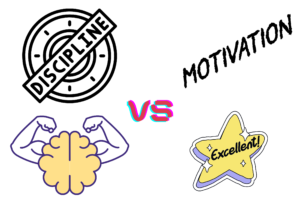Positive thinking shines as a beacon of hope
In a world often clouded by stress, negativity, and doubt we need a positive thinking outlook. It is more than just a cliché; it is a transformative mindset that can reshape our lives, relationships, and well-being. This article is not just about why positive thinking is essential – it is about how to infuse it into every aspect of your life. Whether facing personal challenges, seeking to improve your health, or aiming for professional success, embracing positivity can be your first step towards a brighter, more fulfilling future. So, let us embark on this journey together, exploring the wonders of a positive outlook and learning how to turn optimism into a daily practice.
The Power of Positive Thinking
Positive thinking is not just a feel-good term. Psychologically, it refers to a mental attitude where you expect good and favorable outcomes. Psychology Today refers to the power of positive thinking and how our thoughts have tremendous power over how we feel. In practice, it means focusing on the bright side of life, anticipating happiness, health, and success rather than dwelling on the potential for failure and negative outcomes. It is a mindset that encourages resilience, optimism, and a proactive approach to life’s challenges.
Research has consistently shown that a positive mindset can profoundly impact our overall well-being. A study published in the Journal of Personality and Social Psychology found that optimism can significantly affect physical health. The study noted, were less likely to suffer from heart disease and had a 35% lower risk of major cardiac events. Another research from the Journal of Psychiatric Research highlighted that positive thinking could lead to lower levels of depression and more excellent resistance to the common cold.
Real-life stories further underscore these findings. Take the example of John, a cancer survivor, who credited his recovery not just to medical treatment but also to a positive outlook. He believed that expecting satisfactory results was crucial to his healing process. Similarly, a small business owner, Sarah overcame economic setbacks during a fiscal crisis by maintaining a positive perspective. Her belief in better days ahead kept her motivated, leading to innovative strategies that saved her business.
These examples illustrate that positive thinking is more than ignoring life’s less pleasant situations. Instead, it is about approaching adversity more proactively and hopefully. It is a powerful tool that can change how we perceive our experiences, influencing our health and happiness.

Overcoming Negativity
Negative thoughts often stem from a variety of sources like everyday stress, past traumatic experiences, or societal pressures. These thoughts can be pervasive, leading to a cycle of negativity that affects mood, behavior, and perceptions. Recognizing and addressing these thoughts is critical to cultivating a positive mindset.
The first step in overcoming negativity is acknowledging its presence. It is essential to be mindful of the inner critic that amplifies fears and doubts. This awareness allows us to question the validity of these negative thoughts. For instance, are these thoughts based on facts or just assumptions? Challenging negative thoughts with rational thinking helps in diminishing their power.
Another effective strategy is to shift focus consciously. Whenever negative thoughts arise, intentionally redirect your attention to something positive. This could be a happy memory, gratitude for something in your present, or hope for the future. This practice does not ignore the negative but balances it with positive aspects, preventing the mind from dwelling solely on the negative.
Mindfulness and meditation are powerful tools in this endeavor. They help develop awareness of the present moment, making identifying and letting go of negative thought patterns easier. Regular practice can lead to a more balanced perspective, where negative thoughts are seen as transient and not defining.
Journaling is another practical approach. Writing down negative thoughts can externalize them, making it easier to analyze and understand their origins. This process often reveals patterns and triggers, enabling better management and eventual reduction of such thoughts.
Embracing self-awareness and these practical strategies can significantly alter our mindset, paving the way for a more optimistic and fulfilling life. It is about training the mind to recognize, question, and transform negative thoughts, fostering a healthier, more positive outlook.

Practical Tips for Cultivating a Positive Mindset
Developing a positive mindset is like nurturing a garden; it requires daily attention and care. Here are some practical habits and practices that can help in fostering positive thinking:
1. Gratitude Journaling: Start or end your day by writing down three things you are grateful for. This simple practice shifts focus from what is lacking to what is abundant in your life. It is not just about significant achievements; even small joys count, like a delicious meal or a sunny day.
2. Mindfulness and Meditation: Engage in mindfulness exercises or meditation. These practices help stay anchored in the present moment, reducing the tendency to dwell on past regrets or future worries. Even a few minutes daily can make a significant difference.
3. Positive Affirmations: Begin your day with positive affirmations. Phrases like “I am capable,” “I am worthy,” or “Today will be a good day” can set a positive tone for the day. These affirmations reinforce self-belief and confidence.
4. Surround Yourself with Positivity: The people around us can significantly influence our mindset. Surround yourself with positive, supportive people. Seek friends, family members, or colleagues who uplift and encourage your growth.
5. Limit Exposure to Negativity: Be mindful of your exposure to negative news, toxic social media, or pessimistic individuals. While avoiding negativity entirely is impossible, consciously limiting exposure can reduce its impact on your mindset.
6. Find Positive Aspects in Challenges: When faced with demanding situations, try to find a learning or a positive aspect in the challenge. This does not mean ignoring the problem but approaching it with a mindset that seeks solutions and growth.
7. Practice Self-Care: Regularly engage in activities that nourish your body and soul. Whether it is exercise, reading, or a hobby you love, self-care is crucial for maintaining a positive outlook.
8. Reflect and Reframe: When negative thoughts arise, reflect on them. Try to reframe these thoughts in a more positive or realistic light. For instance, instead of thinking, “I can’t do this,” try, “I’ll do the best I can.”
Remember, cultivating a positive mindset is a journey, not a destination. It is about making small, consistent changes in your daily life. These habits can lead to a more optimistic and joyful approach to life with patience and practice.
The Ripple Effect of Positivity
Positive thinking is not just an individual pursuit; it has a contagious effect, profoundly influencing our surroundings. Adopting a positive mindset radiates outward, affecting your interactions and relationships, be it in the workplace, within your family, or in social circles.

In the workplace, a positive attitude can transform the environment. It encourages collaboration, boosts morale, and often leads to increased productivity. Positive leadership can inspire and motivate teams, creating a more supportive and dynamic work culture.
Within families and social circles, positivity nurtures stronger and more meaningful connections. It fosters an atmosphere of trust, support, and open communication. Positive individuals often become sources of inspiration and comfort to others, strengthening bonds and creating a supportive network.
Moreover, a positive outlook opens doors to new opportunities and experiences. It makes you more receptive to possibilities and can attract favorable circumstances and people into your life. Positiveness often leads to proactive behavior, encouraging you to take chances and explore new paths that might otherwise go unnoticed.
The power of a positive mindset extends far beyond the self. It creates a virtuous cycle of optimism and goodwill, enhancing not just your own life but also the lives of those around you.

In summary, positive thinking is a powerful tool that shapes our well-being and the world around us. From practicing gratitude and mindfulness to surrounding ourselves with positive influences, small steps can lead to significant changes. Remember, the journey towards a positive mindset is gradual and requires persistence. Each positive thought is a seed planted for a future of optimism and opportunity. Embrace this journey with an open heart and mind and watch the transformative power of positivity unfold in your life and those around you.
Your journey and experiences with positive thinking are invaluable. Please share them in the comments below – let us inspire and learn from each other! For more empowering content on enhancing your life, do not forget to subscribe to The Quick Charge Your Life blog. Together, let us charge up our lives with positivity!
About Tommy Turner:
Entrepreneur and author Tommy Turner brings over three decades of experience inspiring others through his journey in the piano industry, online marketing, stock trading, and motivational writing.
For more about Tommy’s journey and work, visit the about page, drop a line on the contact page or leave a comment in the comments section. Check out Tommy’s books!






